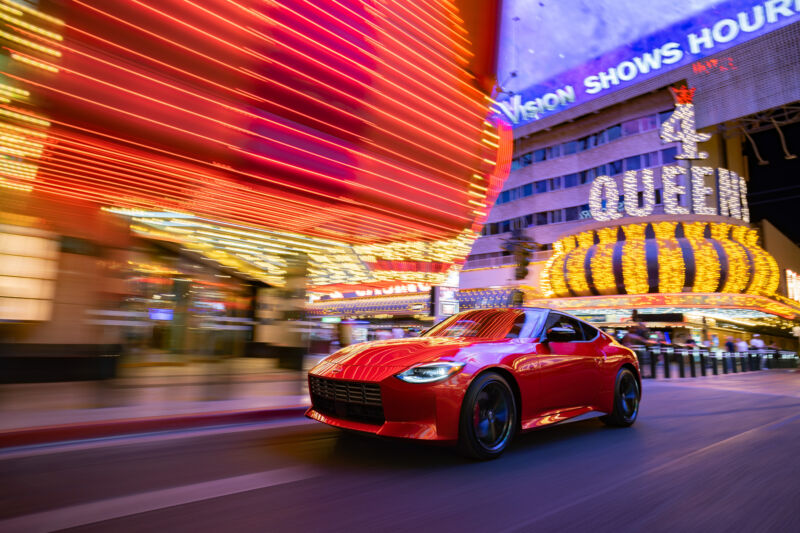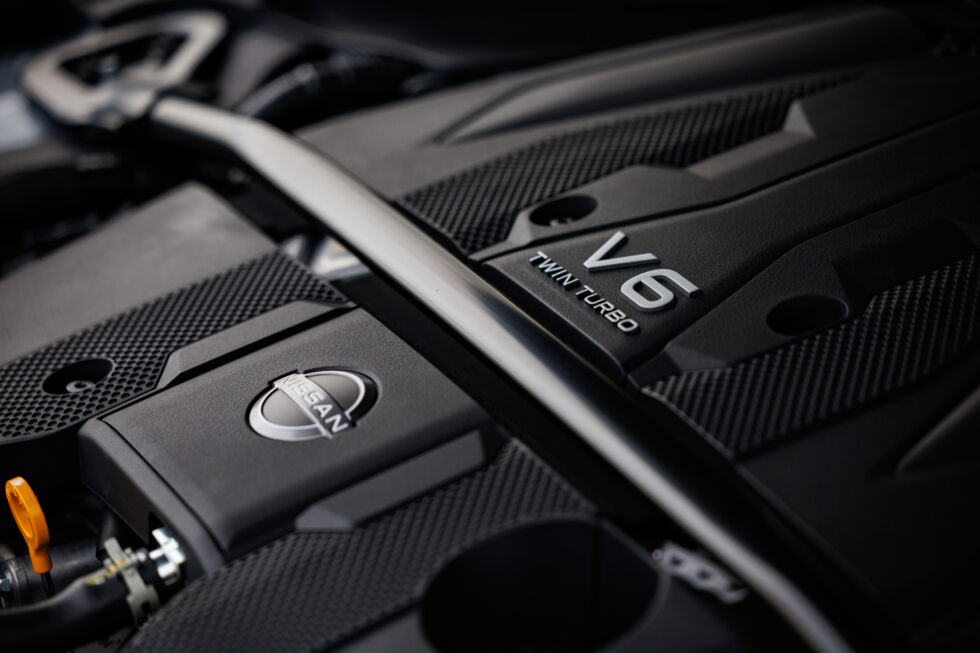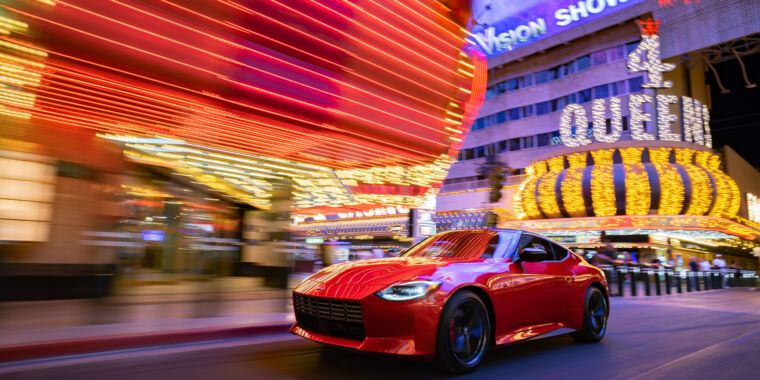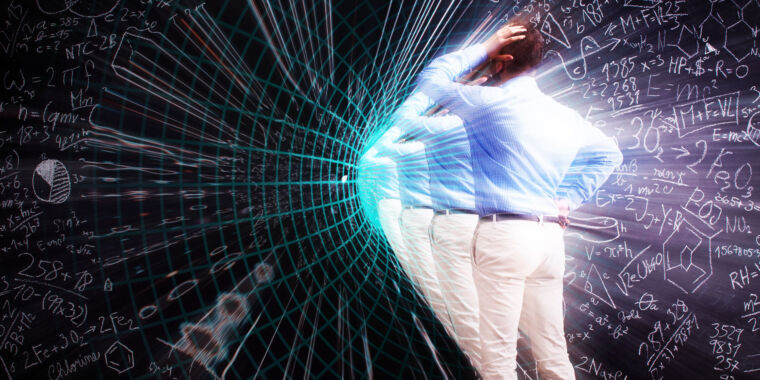
Nissan
The Z badge holds a certain reverence in the world of Japanese performance. Aside from a one-year break back in 2001, Nissan’s two-seater has been in continuous production since 1969, and the formula that was established by the original 240Z still remains in place more than half a century later: eye-catching proportions, driver-focused design, and a six-cylinder engine sending power to the rear wheels.
For decades the Z was locked in a rivalry with the Toyota Supra for sports car supremacy, but in 2002 Toyota decided to pull the plug on its sports coupe. Perhaps due in part to the absence of its natural sparring partner, the outgoing 370Z—which originally made its debut in 2008—had really been starting to show its age in recent years, but any notion that Nissan could afford to rest on its laurels was put to bed in 2019 when the Supra rejoined the fray.
Rather than collaborating with another OEM to build its new sports car (as Toyota did with BMW in order to develop the new Supra), the Z is wholly a product of Nissan, and that comes with inherent benefits as well as some notable drawbacks. But as we discovered while hunting down apices on the road course at Las Vegas Motor Speedway, carving corners on the winding desert tarmac near Nevada’s Lake Mead, and cruising through Sin City, the Z fundamentals thankfully still remain intact.
Remastering a classic
Interest in vintage Japanese performance cars has soared over the past decade, a trend that clearly has not gone unnoticed by Nissan. The design of the new Z takes obvious inspiration from the first- and second-generation cars, incorporating the curvaceous long nose and short deck layout of those machines, while other elements like the LED tail lights, which are reminiscent of the 300ZX from the 1990s, take cues from throughout the model’s history.

Nissan
Under the hood is a new 3.0 L twin-turbocharged V6 that generates 400 hp (300 kW) and 350 lb-ft (475 Nm), with improvements of 68 hp (50 kW) and 80 lb-ft (109 Nm) over the naturally aspirated 3.7 L V6 in the 370Z. According to Hiroshi Tamura, the chief product specialist for the Z, the boosted engine requires significantly more airflow in order to keep it and all of its associated coolers properly fed, hence the large grille that accomplishes that goal while remaining consistent with the throwback styling.
The new power plant is paired with a six-speed manual transmission as standard, and Performance-trimmed models get defeatable auto rev-matching as well as a no-lift upshift feature (along with a number of other upgrades). A nine-speed automatic with steering wheel-mounted paddle shifters is available as a no-cost option as well.
The new car is underpinned by the same architecture as the 370Z, a platform that actually dates back to the launch of the 350Z two decades ago, but it has been significantly reworked for Z duty. Nissan notes a 23.9 percent increase in body rigidity and a 10.8 percent increase in torsional stiffness over the 370Z, both of which translate to improved steering response and overall handling. The suspension geometry has also been revised to dial in more caster angle for better steering feel, and that should provide some solace to those who may be dismayed to discover that the Z uses a new electronically assisted steering rack rather than the 370Z’s hydraulic unit. Stiffer springs, retuned front and rear sway bars, and new monotube dampers are also part of the mix, the latter of which offer faster damping force response than the twin-tube units used in the outgoing car.
The cabin has been heavily reworked as well, with a new 12.3-inch customizable digital gauge cluster, an optional 9.0-inch touchscreen infotainment system, and a new leather-wrapped three-spoke steering wheel that do a lot to meaningfully modernize the proceedings. In keeping with the retro theme, Nissan wisely chose to keep the analog gauge pod on top of the dash. It’s a styling trait that dates back to the original 240Z; here the three gauges measure turbocharger boost pressure, turbocharger turbine speed, and the number of volts that are being generated by the vehicle’s electrical system. Although some of the switchgear and a few other odds and ends carry over from the 370Z, it’s a big step forward that makes the interior feel contemporary from a technological standpoint and stylistically in step with the exterior.








